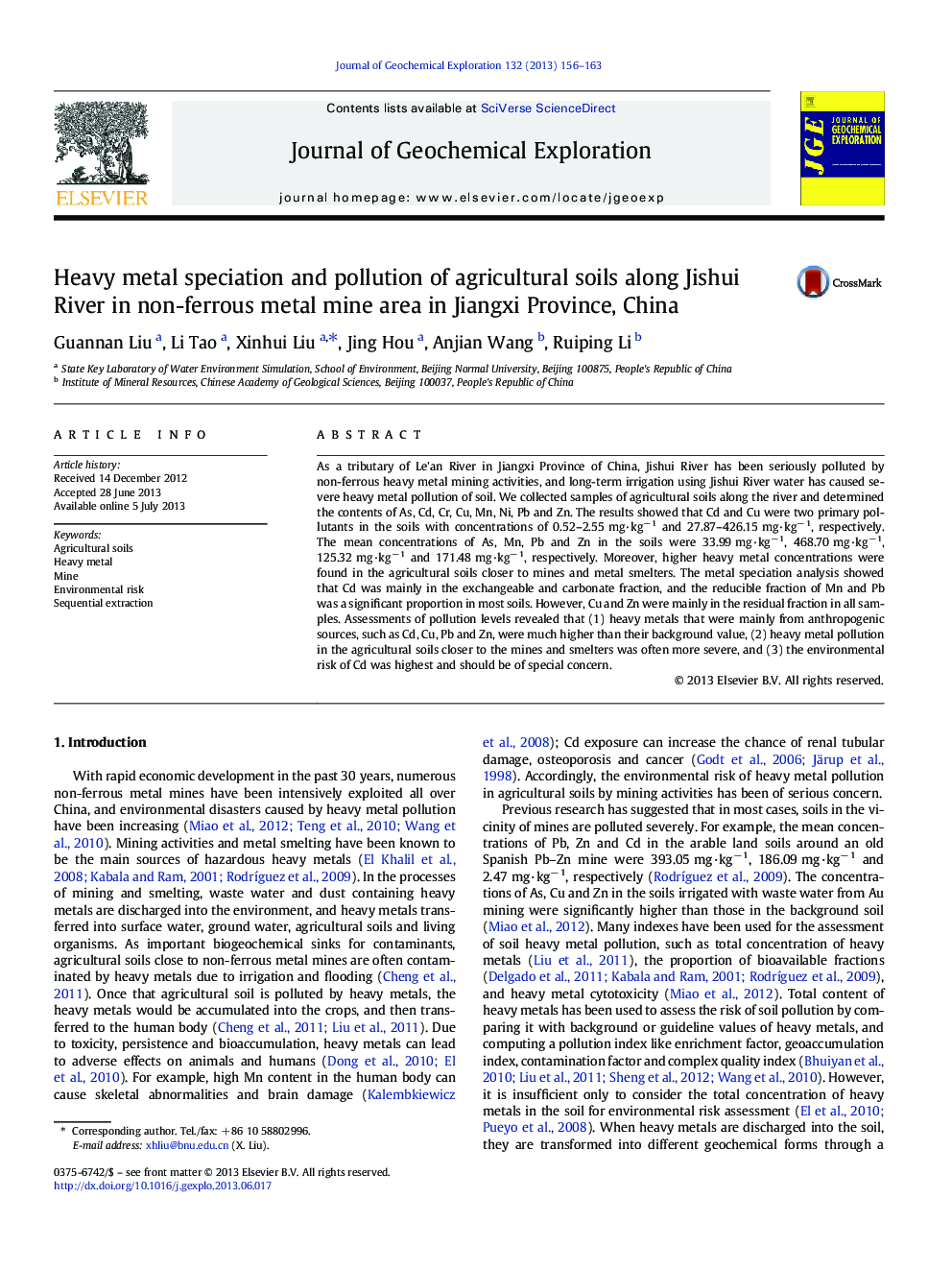| Article ID | Journal | Published Year | Pages | File Type |
|---|---|---|---|---|
| 4457485 | Journal of Geochemical Exploration | 2013 | 8 Pages |
•Cd and Cu are the main pollutants in agricultural soils along the polluted river.•Cd, Cu, Pb and Zn are derived from mining activities and metal smelting.•Cd indicated the highest risk in most soils according to fraction analysis.•The agricultural soils near the mines or smelters were severely polluted.
As a tributary of Le'an River in Jiangxi Province of China, Jishui River has been seriously polluted by non-ferrous heavy metal mining activities, and long-term irrigation using Jishui River water has caused severe heavy metal pollution of soil. We collected samples of agricultural soils along the river and determined the contents of As, Cd, Cr, Cu, Mn, Ni, Pb and Zn. The results showed that Cd and Cu were two primary pollutants in the soils with concentrations of 0.52–2.55 mg·kg− 1 and 27.87–426.15 mg·kg− 1, respectively. The mean concentrations of As, Mn, Pb and Zn in the soils were 33.99 mg·kg− 1, 468.70 mg·kg− 1, 125.32 mg·kg− 1 and 171.48 mg·kg− 1, respectively. Moreover, higher heavy metal concentrations were found in the agricultural soils closer to mines and metal smelters. The metal speciation analysis showed that Cd was mainly in the exchangeable and carbonate fraction, and the reducible fraction of Mn and Pb was a significant proportion in most soils. However, Cu and Zn were mainly in the residual fraction in all samples. Assessments of pollution levels revealed that (1) heavy metals that were mainly from anthropogenic sources, such as Cd, Cu, Pb and Zn, were much higher than their background value, (2) heavy metal pollution in the agricultural soils closer to the mines and smelters was often more severe, and (3) the environmental risk of Cd was highest and should be of special concern.
